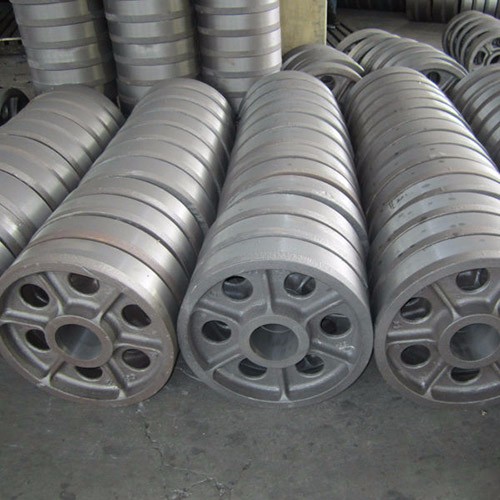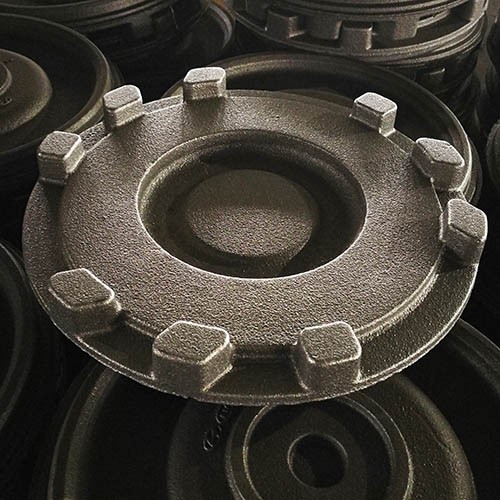Sand casting, the most widely used casting process, utilizes expendable sand molds to form complex metal parts that can be made of nearly any alloy. Because the sand mold must be destroyed in order to remove the part, called the casting, sand casting typically has a low production rate.
The sand casting process involves the use of a furnace, metal, pattern, and sand mold. The metal is melted in the furnace and then ladled and poured into the cavity of the sand mold, which is formed by the pattern. The sand mold separates along a parting line and the solidified casting can be removed.
Sand casting is used to produce a wide variety of metal components with complex geometries. These parts can vary greatly in size and weight, ranging from a couple ounces to several tons. Some smaller sand cast parts include components as gears, pulleys, crankshafts, connecting rods, and propellers. Larger applications include housings for large equipment and heavy machine bases. Sand casting is also common in producing automobile components, such as engine blocks, engine manifolds, cylinder heads, and transmission cases.
The main advantages of using sand casting are listed below:
- Sand casting can be used to make virtually any size part from a gun trigger to an engine block – it is not restricted by the desired part size if the right mould is fabricated
- Sand casting can create very complex parts if the correct cores/gating systems are used
- The process is highly adaptable and can be implemented in the mass production of parts
- Almost all types of alloys can be cast, as long as they melt and are pourable
- The cost of the equipment is low, as it often involves just sand and reusable patterns
- The lead time to make the molds is short, making sand casting ideal for short production runs
- Sand casting has a low set-up cost and is cost-effective to modify
The main disadvantages of using sand casting are listed below:
- Sand casting creates a high degree of porosity in the metal, causing a low final part strength
- The surface finish out of the mould is poor and must be cleaned
- The dimensional accuracy of the cast parts is low due to the poor surface finish as well as the shrinkage of the metal once cooled
- Sand casting cannot prevent defects, so cleaning is mandatory and can be time-consuming
- Sand-casted parts with low tolerances must undergo some secondary machining
Applications of sand casting
It is difficult to grasp how many different technologies use sand casting. Its versatility as a casting process makes it ideal for almost any complex part, and almost every modern technology benefits from this manufacturing process. Below is a list of only a few of the products which are fabricated using the sand casting process, which shows just how varied the possible applications can be.
Sand casting is used to create such products as:
- Many kinds of pistons and valves
- Blowers/impellers
- Cams, bushing, and bearings
- Electronic equipment
- Gas/oil tanks
- Most hardware
- Engine blocks
- Automobile parts
- Screws, nuts, and gears
- Agricultural machines
- Medical equipment
- Mining equipment
And much more.
Sand casting, while nowhere near as precise as investment casting, is a low-cost, low complexity manufacturing process that has repeatedly proven itself as an integral part of modern manufacturing. If investment casting is too cumbersome, or if large parts are needed, consider implementing sand casting into your production line.



